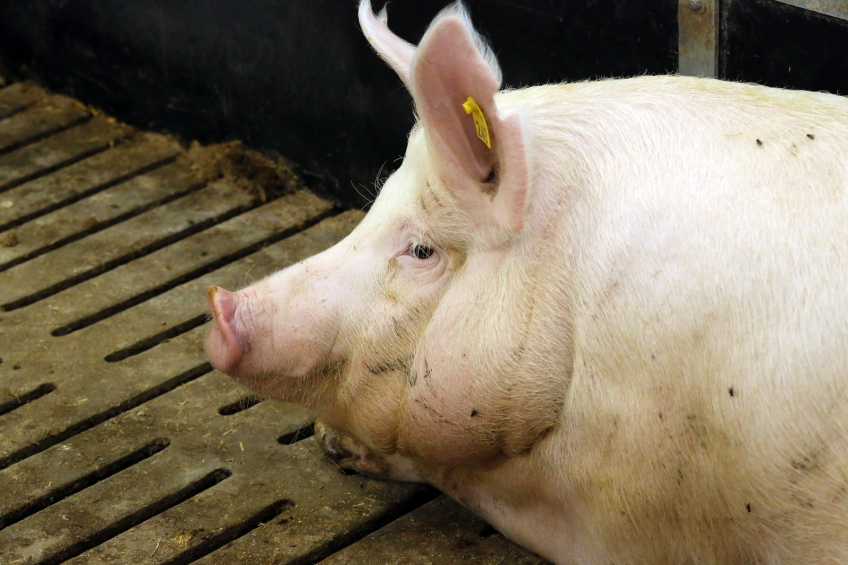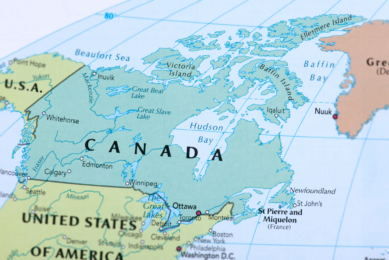PRRSv and PCV2 can persist in bacterial biofilms

Both PRRSv and PCV2 have been observed to associate with and persist within bacterial biofilms for several days, Canadian researchers have reported after preliminary tests.
The pilot study of five scientists from the Université de Montreal, St-Hyacinthe, and the Université Laval, Québec, aimed to investigate association of viruses with bacterial biofilms.
Structured clusters of bacterial cells
In their report, the scientists define bacterial biofilms as ‘structured clusters of bacterial cells that are enclosed in a self-produced polymer matrix and attached to a surface’.
The biofilm polymer matrix might be able to protect viruses, the scientists write, stating: “We thus hypothesised that important viral pathogens of swine can associate with bacterial biofilms and persist for long periods in the environment of swine farms. The aims of this pilot project were to investigate the association of two important viral pathogens of swine, namely, Porcine Reproductive and Respiratory Syndrome virus (PRRSv; an enveloped virus) and Porcine Circovirus type 2 (PCV2; a non-enveloped virus) with bacterial biofilms, and to determine whether bacterial biofilms can protect PCV2 against disinfectants.”
Biofilms of bacterial pathogens
The researchers first established biofilms of several strains of enteric bacterial pathogens (i.e. Escherichia coli or Salmonella Typhimurium) and respiratory bacterial pathogens (Actinobacillus pleuropneumoniae or Streptococcus suis) in vitro following an incubation of 24 to 72 hours.
A defined amount of both PRRSv and PCV2 virus preparation was added to the culture of each of the five named bacterial pathogens and incubated in a standard microtitre plate assay for biofilm formation. The persistence of the viral genome was monitored for up to 3 days in both the supernatant (i.e., the liquid phase above the biofilm) and the biofilm attached at the bottom of the well.
Small proportion of viral inoculum persisted
The scientists wrote: “A small proportion of the viral inoculum persisted in the biofilms for the duration of the experiment. […] Results of monitoring for the presence of PCV2b using the qPCR assay showed, again, that a portion of the viral inoculum persisted in the biofilms for the duration of the experiment. These (PCV2) viruses were infectious when inoculated onto NPTr cells.” Both the PRRSv and the PCV2 results are shown in Tables 1 and 2 respectively (see below).
The researchers concluded, “Although the amounts of virus persisting in bacterial biofilms were relatively low for one of the tested viruses (namely, PRRSv), there was a possibility that once incorporated in a biofilm, these viruses would be protected from disinfectants.” Having also tested some disinfectants on PCV2 in bacterial biofilms, they added, “Our preliminary results indicate that bacterial biofilms seem to only slightly reduce the efficacy of disinfectants, which nevertheless remain effective against the virus tested.”
The study was published in the Journal of Swine Health and Production, a publication by the American Association of Swine Veterniarians (AASV). The research was carried out by Mario Jacques, PhD; Daniel Grenier, PhD; Josée Labrie, MSc; Chantale Provost, PhD; and Carl A. Gagnon, DVM, PhD.
* For each organism, the virus suspension was added to a bacterial culture and incubated in a standard microtiter plate assay for biofilm formation. Testing for PRRSV was conducted daily, using a commercial PCR kit (EZ-PRRSV MPX 4.0; Tetracore, Rockville, Maryland), for up to 3 days in the supernatant (liquid phase above the biofilm) and in the biofilm attached to the plastic surface.
† Positive control, no bacteria, virus only; negative control, no virus, bacteria only.
‡ This strain produces a biofilm in the presence of fibrinogen.
§ This strain does not require fibrinogen to produce a biofilm.
PCR = polymerase chain reaction; PRRSV = porcine reproductive and respiratory syndrome virus; TCID50 = median tissue culture infectious dose.
* The virus suspension was added to a bacterial culture and incubated in a standard microtiter plate assay for biofilm formation for 24 hours for A. pleuropneumoniae, E. coli, and S. suis, and for 48 hours for Salmonella in order to achieve optimal biofilm formation. The presence of the virus was determined for up to 2 days in the supernatant (liquid phase above the biofilm) and in the biofilm attached to the plastic surface.
† Positive control: no bacteria, virus only; negative control, no virus, bacteria only.
‡ This strain produces a biofilm in the presence of fibrinogen.
§ This strain does not require fibrinogen to produce a biofilm.
PCV2b = porcine circovirus type 2b; PCR = polymerase chain reaction; TCID50 = median tissue culture infectious dose.











